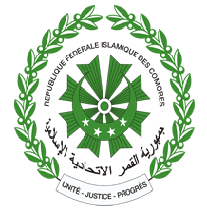Comoros: Government
Key Figures
- Chief of State:
- President Azali Assoumani
- Head of Government:
- President Azali Assoumani
Overview
- Government Name:
- Union of the Comoros
- Constitution:
- Adopted: 2001; Renamed the Islamic Federal Republic of Comoros in the Union of Comoros, this document establishes that the executive power is exercised by the government, the federal legislative power is vested in both the government and parliament, and each of the islands has a great amount of autonomy in the Union. The constitution does not, however, contain provisions concerning the protection of intellectual property rights.
- Government Type:
- Republic

Index of Economic Freedom
Grades each country on a scale of 0 to 100, based on ten freedoms, with 100 representing the greatest amount of economic autonomy from government intervention. Source: Heritage Foundation (2023)
Country Risk Rating
There is no Country Risk Rating for Comoros
Government Branches
| Main Powers | Election Process | Election Cycle 1 | |
|---|---|---|---|
| Executive | The president appoints judges and is in charge of daily executory tasks of the government. |
The president is elected by the plurality vote in single member constituencies. |
5 years |
| Judicial | The supreme court is the highest court of the land. The constitutional court is in charge of determining cases questioning the constitution. |
2 supreme court judges are selected by the president of the union, another 2 by the assembly of the union, and 1 each by the 3 island councils. |
No term limit |
| Legislative | The assembly of the union is in charge of creating the legislature. |
The assembly of the union has 33 members, 24 elected by absolute majority and 9 members elected by the 3 Island Assemblies. |
5 years |
Regional Trade Blocs
International Organization Participation [2]
Environmental Agreements [3]
Tax Information [2]
- Tax Authority:
- Information not available
- Tax Name:
- Information not available
Sources:
- ElectionGuide http://www.electionguide.org/
- EY, http://www.ey.com
- CIA World Factbook, https://www.cia.gov/the-world-factbook/
- U.S. Bilateral Relations Fact Sheets http://www.state.gov/r/pa/ei/bgn/


